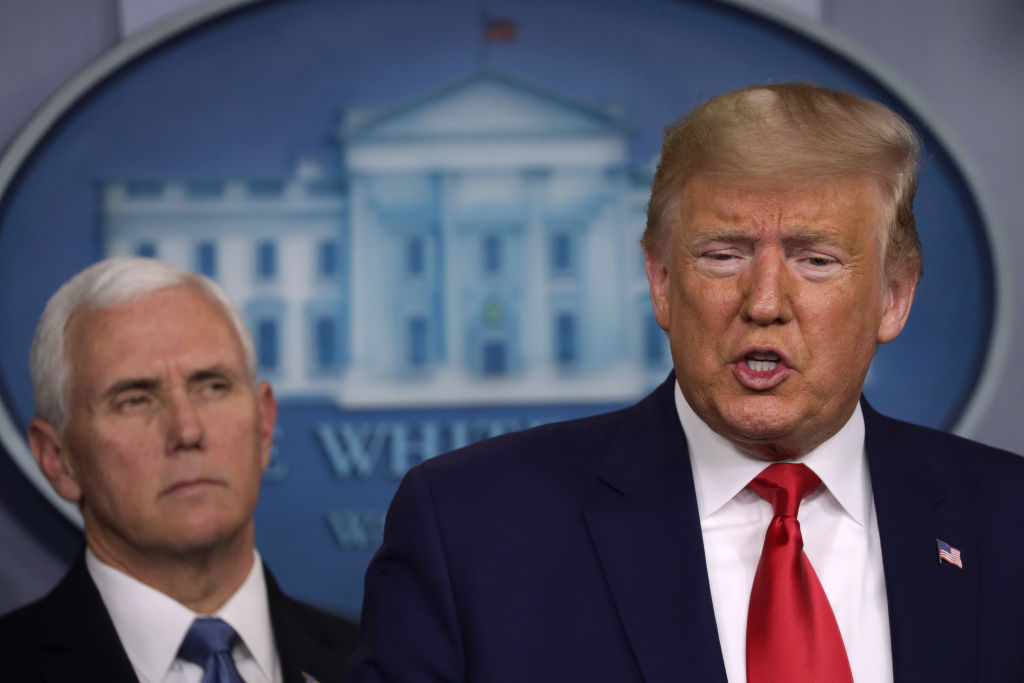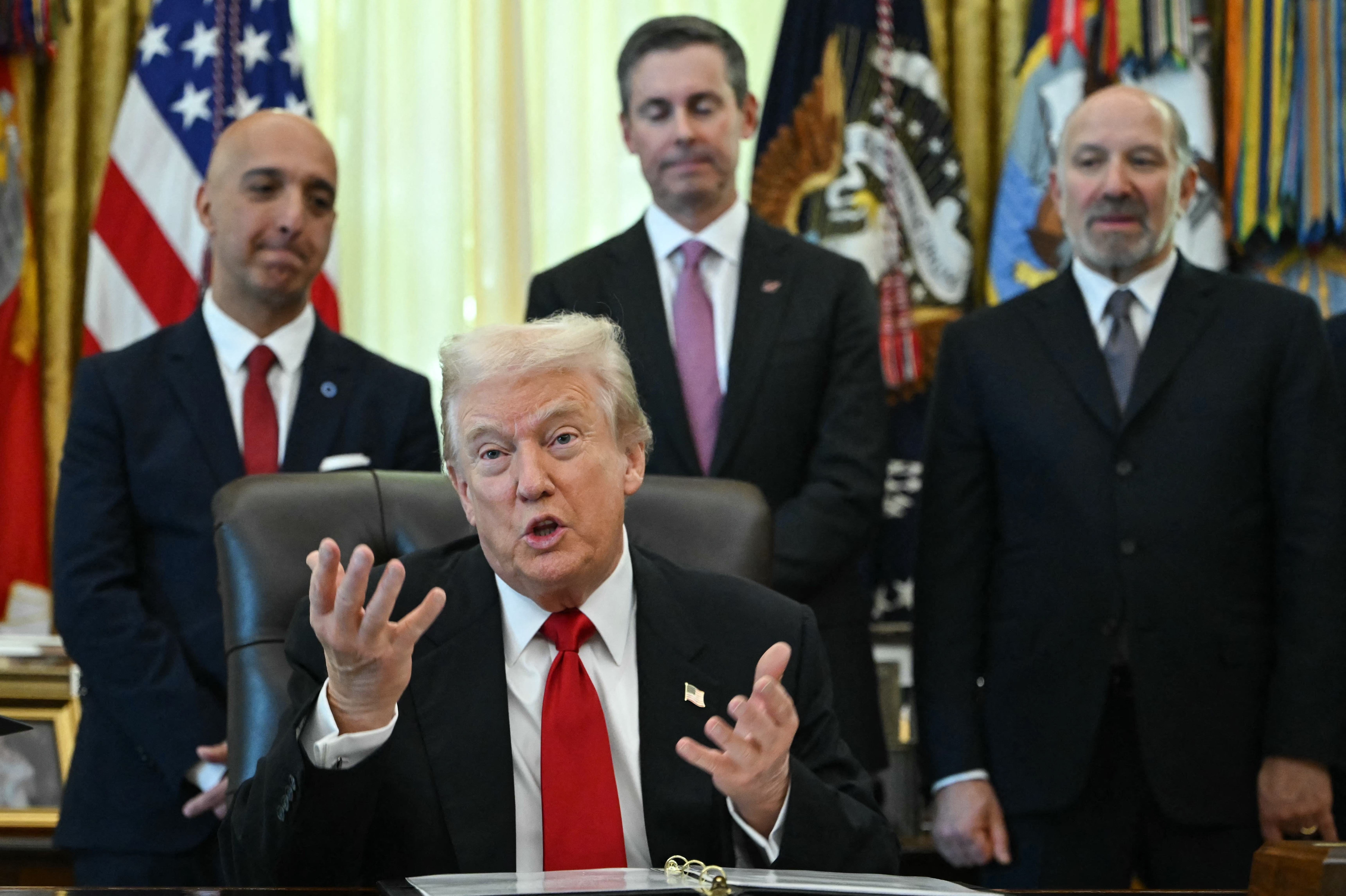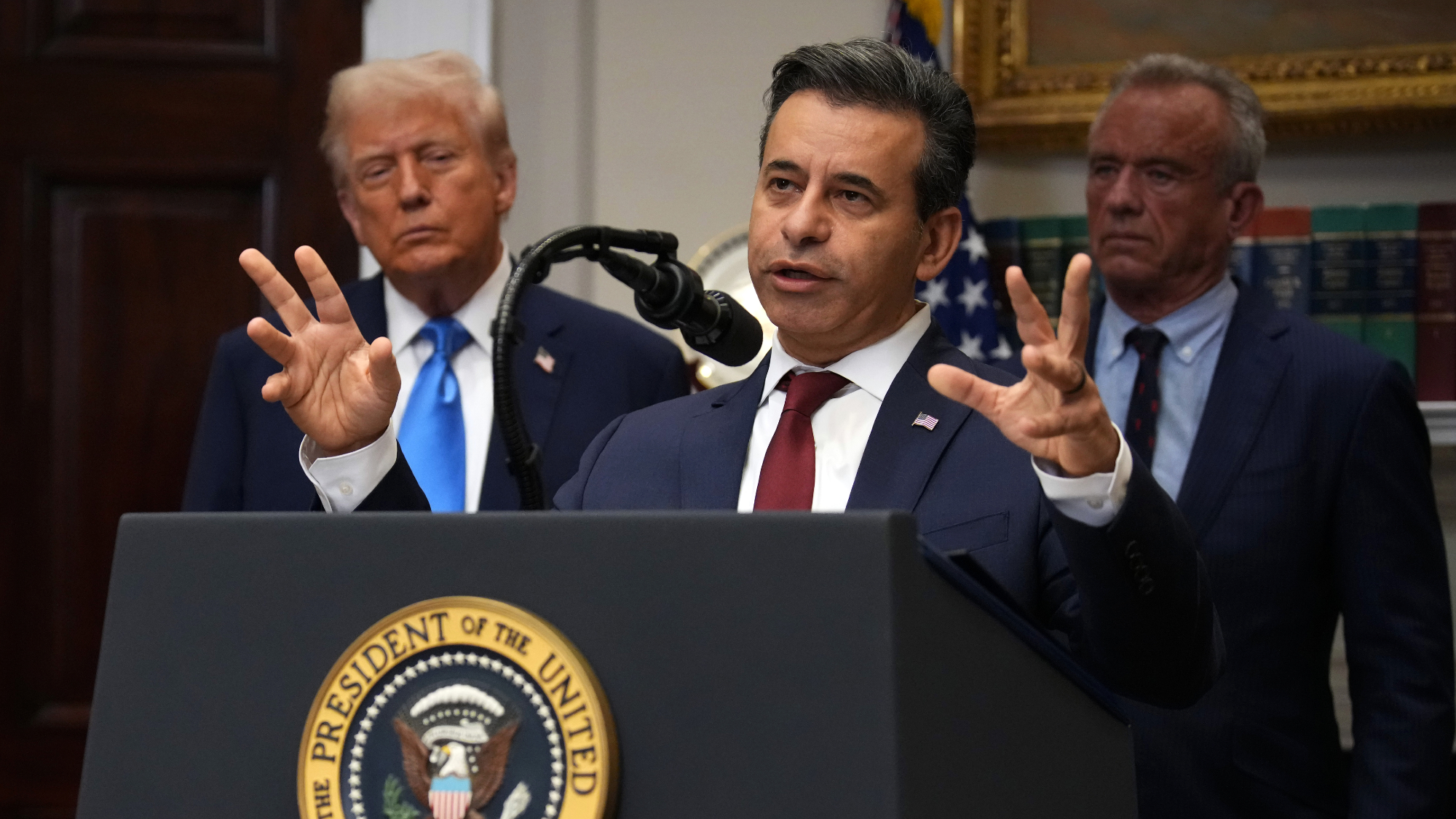Trump proposed using Guantanamo Bay to house early U.S. COVID-19 patients, new book reports


Former President Donald Trump's initial response to the nascent COVID-19 pandemic was to mask the number of cases and, relatedly, keep infected people off U.S. soil, according to a new book, Nightmare Scenario: Inside the Trump Administration's Response to the Pandemic That Changed History, by Washington Post reporters Yasmeen Abutaleb and Damian Paletta.
Trump berated public health officials — and, unintentionally, his son-in-law and shadow coronavirus task force head, Jared Kushner — for trying to roll out a national testing strategy, the Post reports, citing an advance copy of the book, and he had some pretty radical ideas for how to handle Americans infected with the virus overseas. "Don't we have an island that we own?" Trump asked advisers in the Situation Room in February 2020, Abutaleb and Paletta report. "What about Guantanamo?" He reportedly added, "We are not going to import a virus."
After Trump proposed using Guantanamo a second time, stunned aides quickly shot down the idea, worried the American public would react poorly to quarantining U.S. tourists at the same military prison camp that holds terrorism suspects, the Post reports. Abutaleb and Paletta base their book on interviews with more than 180 people, including White House senior staff and government health leaders. But Trump said publicly in March 2020 he wanted to keep U.S. citizens on the infected cruise ship Grand Princess, not bring them to shore, so his COVID-19 numbers wouldn't go up.
The Week
Escape your echo chamber. Get the facts behind the news, plus analysis from multiple perspectives.

Sign up for The Week's Free Newsletters
From our morning news briefing to a weekly Good News Newsletter, get the best of The Week delivered directly to your inbox.
From our morning news briefing to a weekly Good News Newsletter, get the best of The Week delivered directly to your inbox.
Trump told his aides to fire the senior State Department official who allowed 14 coronavirus-infected Americans to return home from the Grand Princess' sister ship, the Diamond Princess, docked in Japan, Abutaleb and Paletta report. Letting them fly back to the U.S. — and probably saving their lives, the Post reports — "doubles my numbers overnight," Trump reportedly complained to Health and Human Services Secretary Alex Azar. Trump also called for firing HHS emergency preparedness chief Robert Kadlec, who signed off on the Diamond Princess evacuation, the book reports, adding that senior officials resisted Trump's demands and he eventually "gave up."
"One of the biggest flaws in the Trump administration's response is that no one was in charge of the response," Abutaleb and Paletta write in Nightmare Scenario, which means that "ultimately, there was no accountability, and the response was rudderless." Read more at The Washington Post.
A free daily email with the biggest news stories of the day – and the best features from TheWeek.com
Peter has worked as a news and culture writer and editor at The Week since the site's launch in 2008. He covers politics, world affairs, religion and cultural currents. His journalism career began as a copy editor at a financial newswire and has included editorial positions at The New York Times Magazine, Facts on File, and Oregon State University.
-
 Do oil companies really want to invest in Venezuela?
Do oil companies really want to invest in Venezuela?Today’s Big Question Trump claims control over crude reserves, but challenges loom
-
 ‘Despite the social benefits of venting, people can easily overdo it’
‘Despite the social benefits of venting, people can easily overdo it’Instant Opinion Opinion, comment and editorials of the day
-
 What to know about the rampant Medicare scams
What to know about the rampant Medicare scamsthe explainer Older Americans are being targeted
-
 Trump HHS slashes advised child vaccinations
Trump HHS slashes advised child vaccinationsSpeed Read In a widely condemned move, the CDC will now recommend that children get vaccinated against 11 communicable diseases, not 17
-
 The stalled fight against HIV
The stalled fight against HIVThe Explainer Scientific advances offer hopes of a cure but ‘devastating’ foreign aid cuts leave countries battling Aids without funds
-
 Obesity drugs: Will Trump’s plan lower costs?
Obesity drugs: Will Trump’s plan lower costs?Feature Even $149 a month, the advertised price for a starting dose of a still-in-development GLP-1 pill on TrumpRx, will be too big a burden for the many Americans ‘struggling to afford groceries’
-
 Covid-19 mRNA vaccines could help fight cancer
Covid-19 mRNA vaccines could help fight cancerUnder the radar They boost the immune system
-
 Can TrumpRx really lower drug prices?
Can TrumpRx really lower drug prices?Today’s Big Question Pfizer’s deal with Trump sent drugmaker stocks higher
-
 FDA OKs generic abortion pill, riling the right
FDA OKs generic abortion pill, riling the rightSpeed Read The drug in question is a generic version of mifepristone, used to carry out two-thirds of US abortions
-
 The new Stratus Covid strain – and why it’s on the rise
The new Stratus Covid strain – and why it’s on the riseThe Explainer ‘No evidence’ new variant is more dangerous or that vaccines won’t work against it, say UK health experts
-
 Why are autism rates increasing?
Why are autism rates increasing?The Explainer Medical experts condemn Trump administration’s claim that paracetamol during pregnancy is linked to rising rates of neurodevelopmental disorder in US and UK
